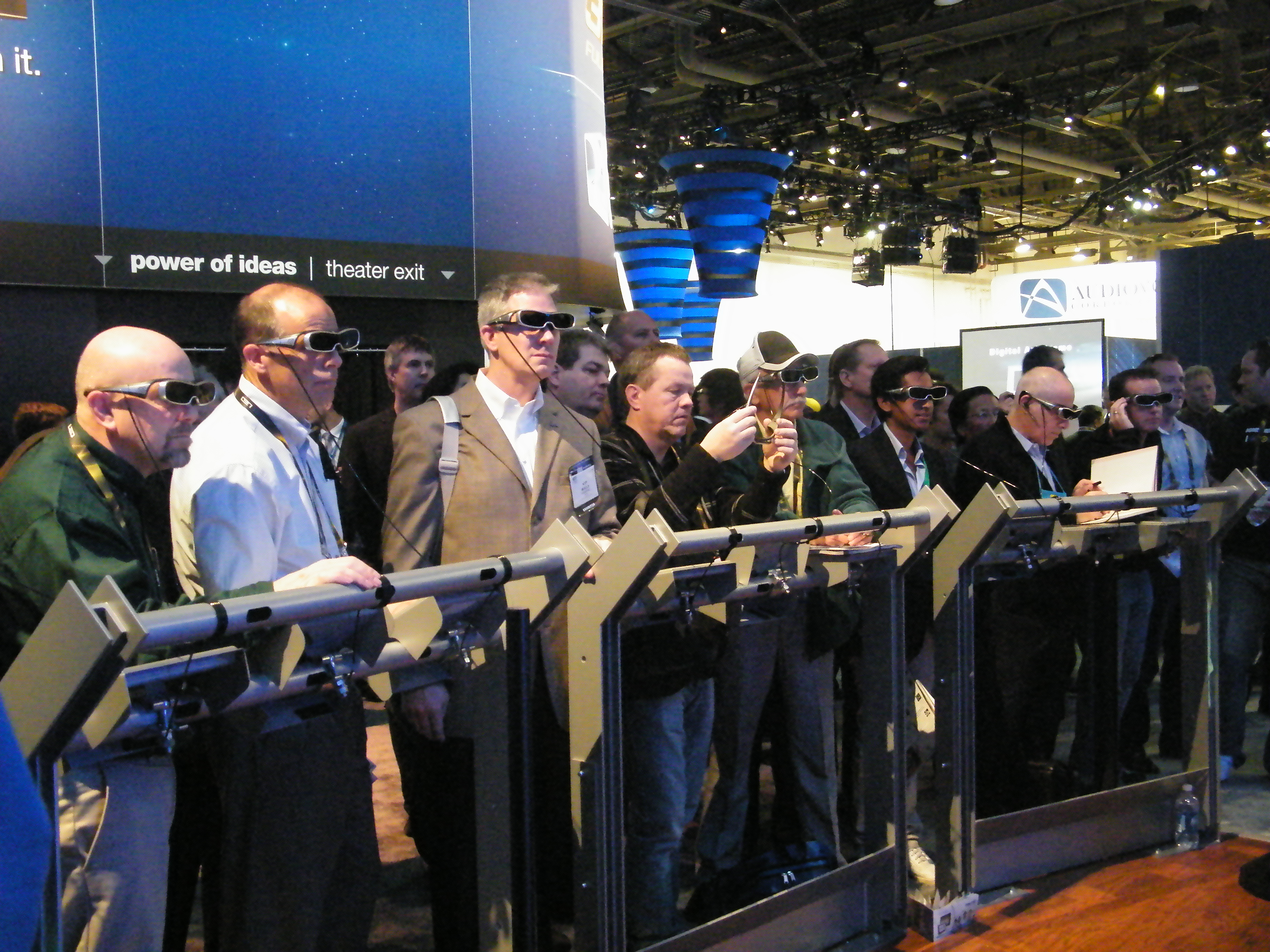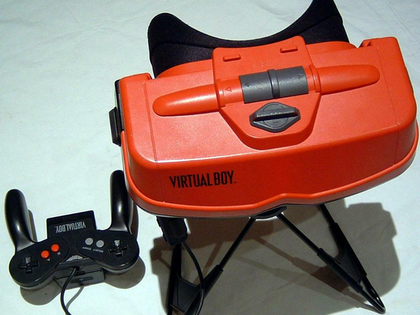3D gaming: everything you need to know

3D gaming is soon set to move way beyond its current limited niche in the hardcore PC market, with console manufacturers and game developers increasingly eager to provide us with compelling interactive content to play on the slew of new TVs set to hit the shelves later this spring.
CES 2010 was, in many ways, a festival of 3D television tech, with pretty much every major TV manufacturer unveiling its latest 3D HD TV models – many of which will see a commercial release later next month.
The runaway successes of movies such as James Cameron's Avatar and Disney's UP have not only generated a much-welcome renewed interest in cinema-going, but they will also drive 3D TV sales when they arrive on Blu-ray later in 2010.
Sky is also launching the world's first 3D television station in April which will drive consumer adoption further. Just like that imaginary game of Tetris 3D we dreamed of the other night, the pieces are starting to fall into place.
But what of 'proper' 3D gaming in our lounges? Are we still stuck in that annoying catch-22 stalemate position, where publishers won't invest the extra cash and developers won't go the extra mile until a proven market (and that all-important return on investment) is in place?
A brief history of 3D gaming
There have been numerous attempts to take console and handheld and PC gaming into the third dimension in the last twenty years. Most have been quickly (and rightly) dismissed by consumers as little more than cheap headache-inducing gimmickry.
Sign up for breaking news, reviews, opinion, top tech deals, and more.
"We didn't worry so much about the past efforts, such as Nintendo's Virtual Boy or things like that," says Dale H Maunu, an analyst at 3D and display tech research firm Insight Media.

VIRTUAL BOY: Failed to ignite a 3D gaming revolution in the '90s
"3D gaming is really more recent, in terms of the ability to do Stereoscopic 3D ("S-3D") gaming. The release of DirectX 8 ushered in the era of a standardized 3D API for MS Windows, which resulted in game developers and publishers creating more 3D assets in their games," adds Maunu.
"The move to DirectX 9 provided still more tools for game developers and is really the minimum requirement for S-3D gaming; many of the titles that can be played in S-3D were developed for DirectX 9."
Rewinding a couple of years back to 2008, there were already 3D monitors and systems available from the likes of iZ3D and Zalman for playing DirectX 9 games in S-3D. "The Zalman system used drivers from DDD, while iZ3D developed their own," says Maunu, adding, "the systems worked pretty well, but the drivers generally needed to be hand-tweaked for each game since there was no standard or API for S-3D. Plus, the game developers were not directly involved in making their games work in S-3D so there was still quite a bit of variability in the S-3D experience from game-to-game."
It was really the introduction of Nvidia's 3D Vision tech early in 2009, along with its own S-3D API, that started to put some standards in place for games developers and games buyers.
"World of Warcraft introduced support for 3D Vision in early 2009, and Nvidia was able to convince many developers to support S-3D," says Maunu. And some cracking 3D-optimised PC titles soon followed including the likes of Left 4 Dead 2, Resident Evil 5, Batman: Arkham Asylum and, most recently, the game spin-off of Avatar from Ubisoft.
TechRadar spoke with Patrick Naud, Ubi's Executive Producer of Avatar, who told us that working on 3D "was a great experience for our team… any time we can get out there and be one of the first on a new technology like this, you get a boost of creativity, and we had a lot of fun coming up with great ways to use the innovation to make a game that puts the player right into the environment and action.
"I personally see a lot of potential with combining 3-D with Natal," says the Avatar game producer. "These two technologies together will bring us even more immersive experience to gameplay."
The S-3D Gaming Alliance
Neil Schneider is the Executive Director of the S-3D Gaming Alliance (S3DGA) - the non-profit and non-proprietary organisation that is generally considered to be the official voice and standards body for stereoscopic 3D gaming.
Schneider disagrees with analysts such as Dale Maunu who claims that S-3D gaming is a recent phenomenon in gaming, telling TechRadar that, "modern S-3D gaming has been around for a whopping twelve years!" (The S3DGA has put together its own potted history of S-3D gaming, and you can see Part 1 and Part 2 of that over on YouTube (Part 3 is currently in the works)).
Schneider also points out that while Nvidia's own 3D marketing suggests 400 compatible video games, "this is for depth-only situations…. [and] once gamers attempt out of screen or pop-out settings, anomalies become much more prevalent, and this compatibility list is greatly reduced. Similar results can be expected from additional driver developers like DDD and iZ3D."
"This is one of the reasons why S3DGA was founded. We want that 400+ game support, and we want it industry-wide."
Schneider also adds that he considers it inappropriate to give all credit Nvidia for developing S-3D standards. "This is not the case and is misinformed," says the S3DGA Director. "Its efforts are 100% proprietary, and is not standards based. Their drivers do not work with the countless competing shutter glasses out there and Nvidia's first effort to pass an exact left and right image view to the display was done with Avatar: The Game, and this was handled through private arrangement."
He adds that Ubisoft's Avatar: The Game "had equally native support for iZ3D, RealD's new format, Sensio's codec, interlaced, and more" and that "Nvidia's left/right technique was just one of many viable implementations included in the game.
Even with an in-game interface feature, 99% of Nvidia GeForce 3D Vision optimizations are profile based liked all the other driver developers. It is false to think otherwise. Avatar: The Game is the first and only true API based game in the Nvidia camp, though this should grow soon enough."
"This does not undermine the quality that NVIDIA puts out with their GeForce 3D Vision solution. I just think it's false to credit them with competitive innovations that don't yet exist."
Several S-3D gaming standards are in the works by S3DGA. Neil Trevett, President of the Khronos Group (OpenGL) and VP of NVIDIA Mobile Content, Habib Zargarpour, Senior Art Director for Electronic Arts, and Jon Peddie of Jon Peddie Research all serve on S3DGA's advisory board.
"If there was a single lesson from CES 2010, it's that NVIDIA is one of several viable players in the market. Additional players include Hyundai, Zalman, LG, Acer, XpanD, and more to come. AMD and Bit Cauldron are just around the corner, too."
Low entry barriers
Of all the creative industries, it is games development that is uniquely positioned to immediately do the most interesting stuff with new 3D display and glasses tech. After all, games creators have been making their games in 3D for years, but have to date only been limited by the fact that the game is viewed and played on a flat 2D monitor or television.
"It seems certain that with all sections of industry getting ready to rally behind 3D TV it is something game developers will have start putting in their sights," agrees Peter Walsh, Lead Programmer at Cohort Studios.
"Game developers are uniquely poised to develop content to take advantage of 3D TV. Film makers, sports broadcasters, animation studios, and just about anyone else involved in TV need to make significant investments replacing their infrastructure of cameras, editing equipment, and so on to handle 3D data.
"Game developers on the other hand already have all that information readily available. In fact we spend a great deal of time trying to make 3D worlds display well on a 2D screen. To make games work with 3D TV we already have the depth information available – we just need the means to convey that data to the new TVs."
Current page: A brief history of 3D gaming
Next Page Motion plus full 3D: a shotgun marriage?